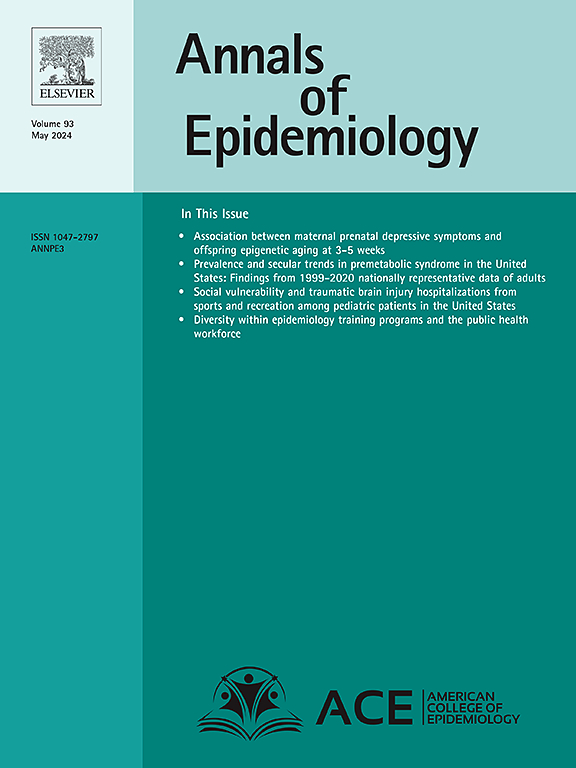加拿大多伦多注射吸毒者中监督消费服务使用与共用注射设备之间关系的定量偏倚分析
IF 3.3
3区 医学
Q1 PUBLIC, ENVIRONMENTAL & OCCUPATIONAL HEALTH
引用次数: 0
摘要
目的:监督消费服务(SCS)预防致命的过量用药,但对其当代对传染病风险的影响知之甚少。方法采用定量偏倚分析(QBA),在考虑测量误差、选择偏倚和未测量混杂因素的情况下,评估SCS使用与注射设备共用之间的关系,并对加拿大多伦多2018 - 2020年接受调查的695名注射吸毒者进行横断面抽样。我们使用修正泊松回归估计了自我报告的SCS使用与设备共享之间的关联。敏感性分析了不同的SCS使用类别和共享定义。QBA估计了错误分类、选择偏差和未测量的混杂的影响。结果几乎所有参与者(96.6% %)最近都使用过针头和注射器计划。频繁使用SCS(≥26 %)与共用设备无关(调整患病率(aPR): 0.98;95 % ci: 0.77-1.24)。敏感性分析的结果没有显著差异。在多偏倚分析中,偏置校正后的中位PR为1.04(范围:0.83-1.42),表明常规SCS使用(≥75% %的注射)与共用注射器之间没有关联。综上所述,在高针头和注射器覆盖率的背景下,SCS的使用与设备共享无关。错误分类、选择偏差和未测量的混杂似乎不会影响观察到的关联。本文章由计算机程序翻译,如有差异,请以英文原文为准。
A quantitative bias analysis of the association between supervised consumption service use and sharing of injection equipment among people who inject drugs in Toronto, Canada
Purpose
Supervised consumption services (SCS) prevent fatal overdoses, but less is known about their contemporary impact on infectious disease risk.
Methods
We used quantitative bias analyses (QBA) to evaluate the association between SCS use and sharing of injection equipment while accounting for measurement error, selection bias, and unmeasured confounding, drawing on a cross-sectional sample of 695 people who inject drugs in Toronto, Canada surveyed from 2018 to 2020. We estimated the association between self-reported SCS use and equipment sharing using modified Poisson regression. Sensitivity analyses varied SCS use categories and definitions of sharing. QBA estimated the impact of misclassification, selection bias, and unmeasured confounding.
Results
Almost all participants (96.6 %) had recently used a needle and syringe program. Frequent SCS use (≥26 % of injections) was not associated with sharing equipment (adjusted prevalence ratio (aPR): 0.98; 95 % CI: 0.77–1.24). Results of sensitivity analyses did not meaningfully differ. In multiple bias analysis, the median bias-adjusted PR of 1.04 (range: 0.83–1.42) suggested no association between regular SCS use (≥75 % of injections) and syringe sharing.
Conclusions
In summary, SCS use was not associated with equipment sharing in a context of high needle and syringe program coverage. Misclassification, selection bias, and unmeasured confounding did not appear to impact the observed associations.
求助全文
通过发布文献求助,成功后即可免费获取论文全文。
去求助
来源期刊

Annals of Epidemiology
医学-公共卫生、环境卫生与职业卫生
CiteScore
7.40
自引率
1.80%
发文量
207
审稿时长
59 days
期刊介绍:
The journal emphasizes the application of epidemiologic methods to issues that affect the distribution and determinants of human illness in diverse contexts. Its primary focus is on chronic and acute conditions of diverse etiologies and of major importance to clinical medicine, public health, and health care delivery.
 求助内容:
求助内容: 应助结果提醒方式:
应助结果提醒方式:


